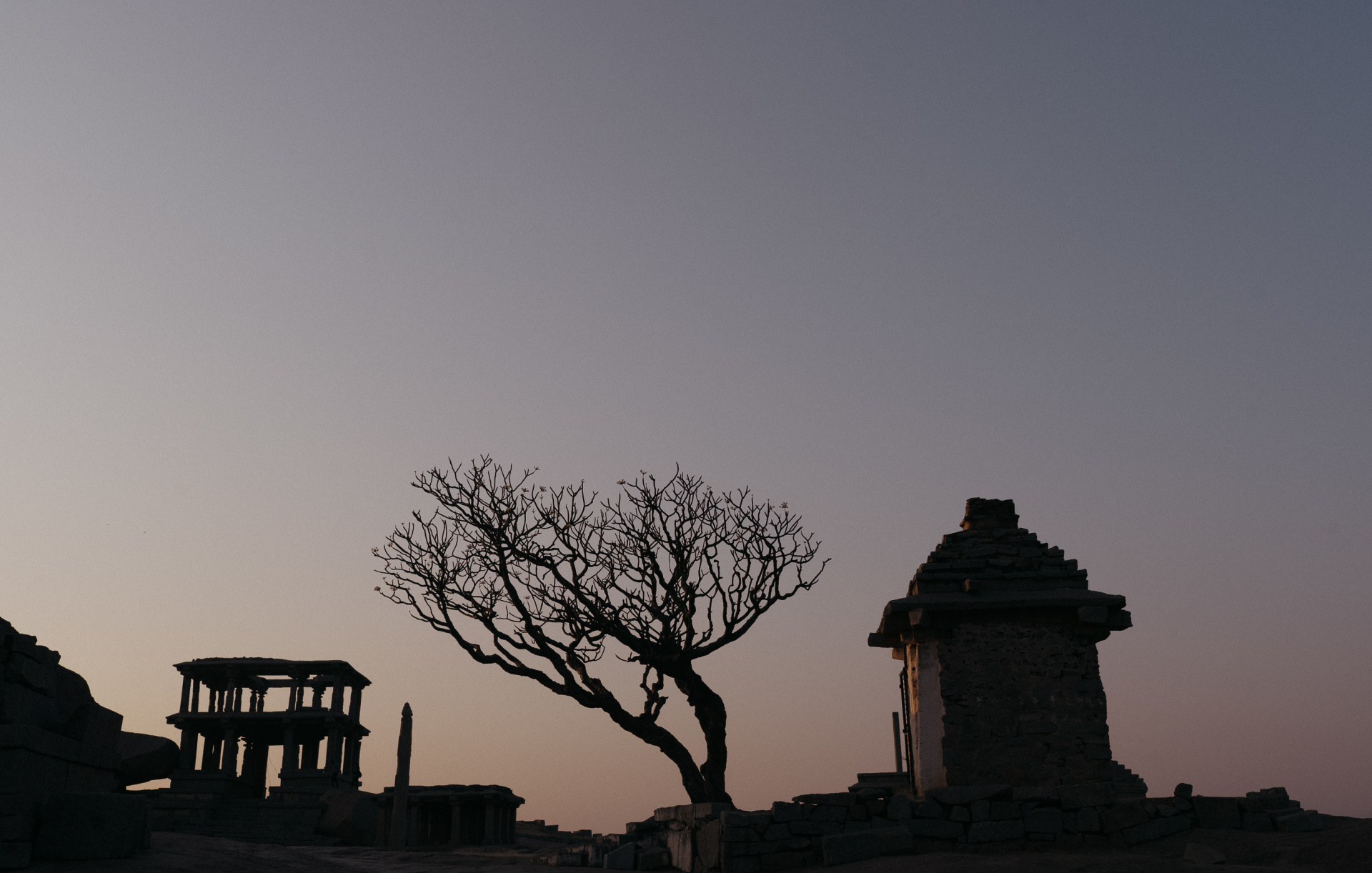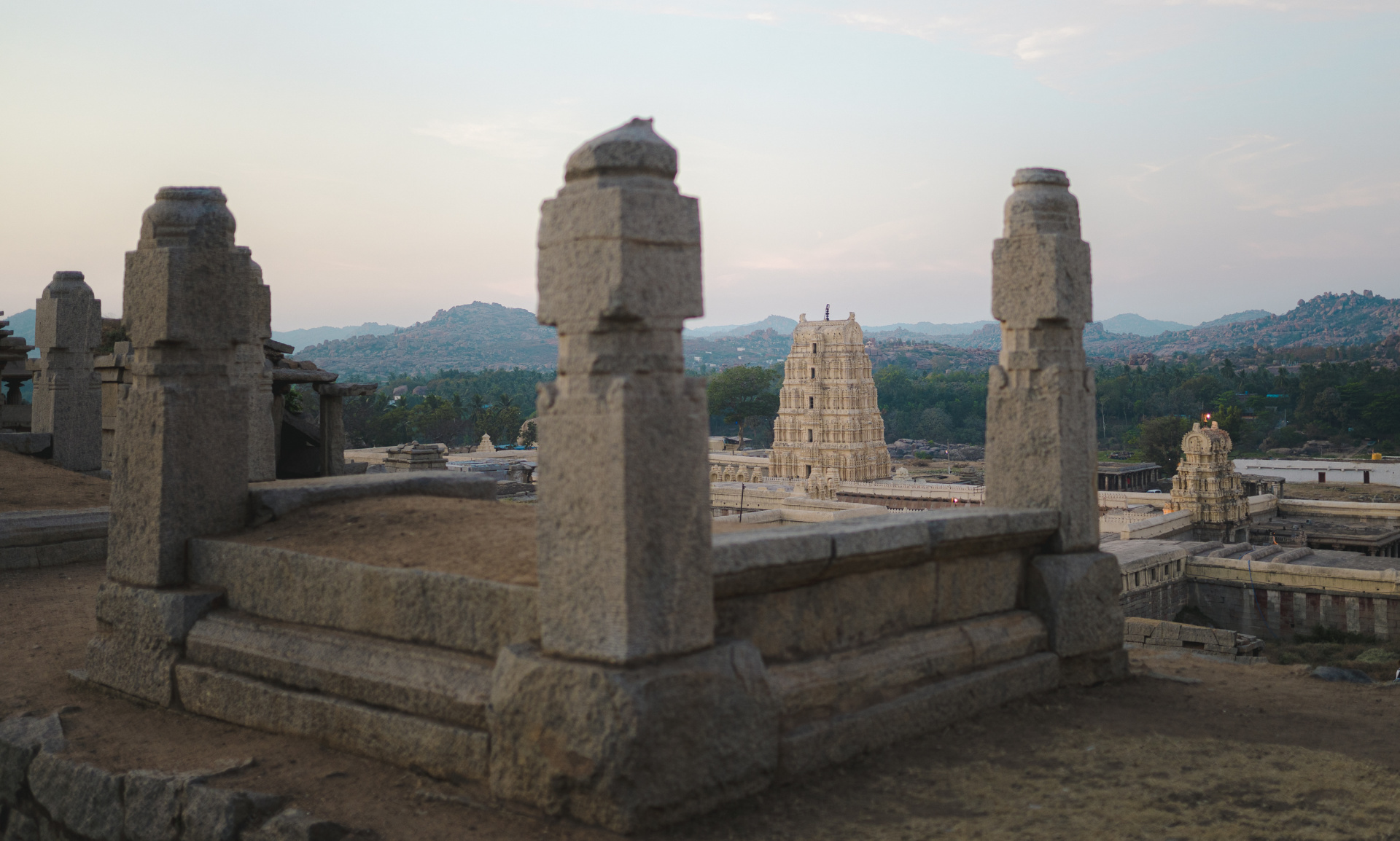Where Stones Sing: The Hemakuta Hill in Hampe
Published on: 06/05/2024
Published on: 06/05/2024

Photo title: Hemakuta Hill
|Photo Credits: Rajiv Shyamsundar

Photo title: Virupaksha Temple
|Photo Credits: Rajiv Shyamsundar

Sourabha Rao is a professional writer, poet, translator, former freelance columnist and voiceover artist, with literary proficiency in English and Kannada. She deeply cares about producing stories primarily on nature and wildlife, social issues, history and art. She strives to write truthfully and creatively in an earnest attempt to create content that educates and entertains, has impact, and mobilises positive social change. She has written op-eds and photo-stories for leading Kannada and English newspapers, and has collaborated with filmmakers in wildlife conservation and water conservation. Sourabha lives in Bengaluru, while a big chunk of her heart has stayed back in Mysuru, her forever-muse.
Craft Calling: Traditional Lambani Arts and Crafts and the Sandur Kushala Kala Kendra
The Path of a Downfall: Movements that Led to the Collapse of the Vijayanagara Empire
Hampi Ruins in the 1900s: Stellar Photographs From A Forgotten Historical Text
North Karnataka’s Threesome — Badami, Aihole, & Pattadakallu
Hampi Ruins in the 1900s — The Gateways into the City
The cute little denizens of the Kamalapura Palace, Hampi
From the Kitchens of Evolve Back – Jallad Roti | Akki Roti
From the Kitchens of Evolve Back – Qubani ka Meetha and Shahjahani ka Meetha
From the Kitchens of Evolve Back – Murgh-e-Lazeez
From the Kitchens of Evolve Back – Nizami Machali ka Salan
From the Kitchens of Evolve Back – Dum ki Nalli
From the Kitchens of Evolve Back – Anapa Ginjala Pulusu
From the Kitchens of Evolve Back – Raan-e-Kamalapura
From the Kitchens of Evolve Back – Baghara Baingan
From the Kitchens of Evolve Back – Natukodi Pulusu
From the Kitchens of Evolve Back – Tondekai Palya
From the Kitchens of Evolve Back – Royala Igaru
From the Kitchens of Evolve Back – Koli Chuttada
From the Kitchens of Evolve Back – Karibelle Cutlet
The Battle of Talikota and the Sacking of Hampi
From the Kitchens of Evolve Back – Kori Ghee Roast
Harihara & Bukka: founders of the Vijayanagara Empire
The Battle of Raichur: The Beginning of the End